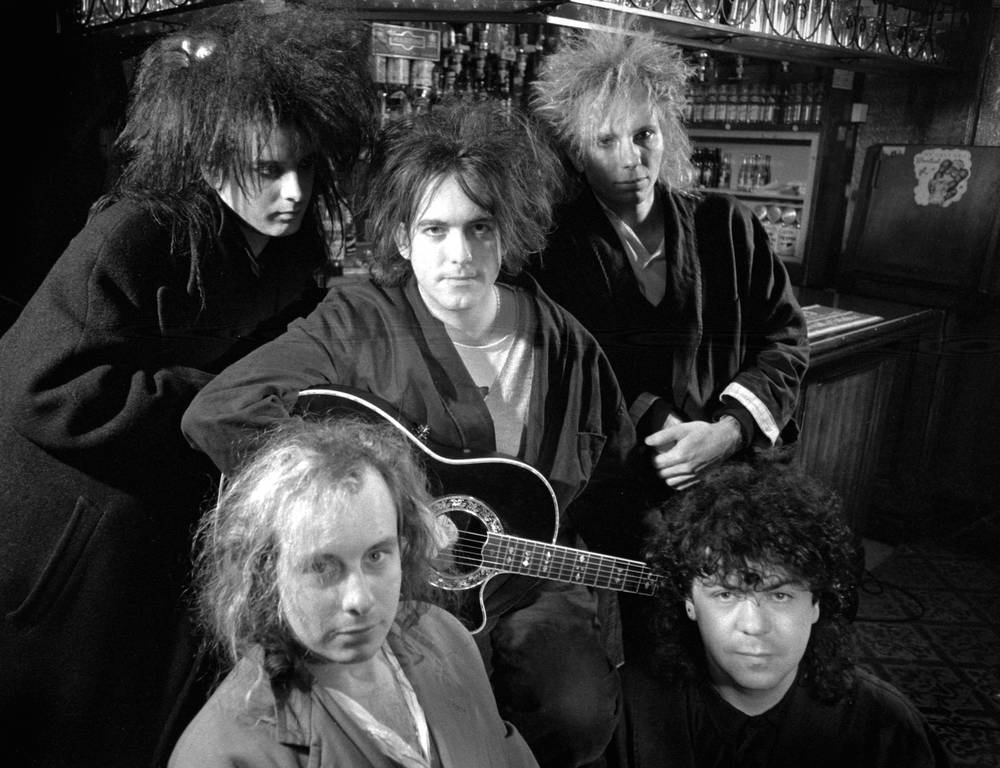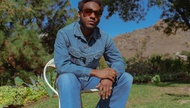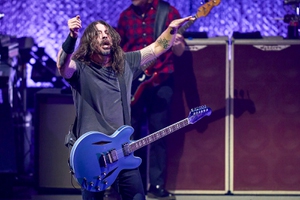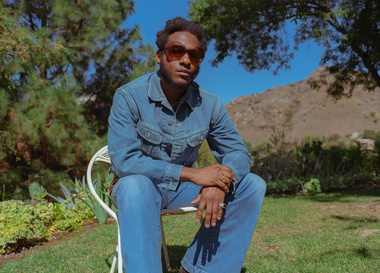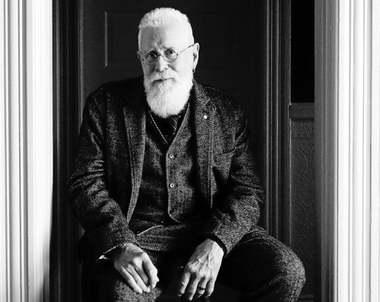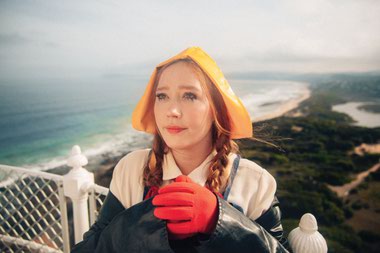Lol Tolhurst, former drummer and keyboardist for The Cure, is out on a book tour in support of his new memoir, Cured: The Tale of Two Imaginary Boys. The book features plenty of stories about the U.K. band, its formation and its ascent, but also discusses how he grappled with alcoholism and addiction—which ultimately led to his departure from The Cure around the time of 1989’s Disintegration.
Tolhurst says the positive reception to and outpouring of support for the book has been “absolutely bloody wonderful,” he says. “It’s been absolutely amazing, people’s reactions and the reviews. It’s really made me feel very loved, which is a wonderful thing.”
The musician says it’s even more gratifying that people are resonating not just with his Cure memories, but his subsequent recovery and sobriety. “A lot of people say to me that they identify with the struggles going on in the book, which are human struggles,” he says. “That’s really exactly what I wanted to get across.
Tolhurst will read from the book and sign copies November 4 at Zia Record Exchange on Eastern Avenue, then will bring a DJ set to Artifice’s Scarlet goth party on November 5 (he says Devo, Kraftwerk, Nine Inch Nails and, of course, The Cure are favorites). The Weekly asked him to expound upon five key musical moments from Cured.
Seventeen Seconds (The Cure, 1980)
Your second record. Obviously, it was influenced by Bowie, Wire, Nick Drake and the Banshees. What else do you remember about that time? The first album was a three-piece, and then we went to a four-piece. Michael [Dempsey, bassist] had left, and it was just myself and Robert [Smith]—and we got Simon [Gallup, bassist] in, and Simon’s friend Matthieu [Hartley, keyboardist].
Although the record is quite somber, we had a happy time making it. That was the first time we were actually given some creative freedom, because the first album [1979’s Three Imaginary Boys] we hadn’t produced ourselves. Chris Perry had produced it. We had actually taken control and grabbed the reins of our own creation, which is always going to feel good, you know?
You were also able to work out some of the ideas live for this record. You had some memorable tour dates around this time. And it helps, because we can hone some of the stuff in front of audiences and sort of say to ourselves, “Okay, maybe that section there doesn’t work quite so well” or whatever, and we’ll change it up a bit. We’ve always been able to do that.
Faith (The Cure, 1981)
A lot of Faith was written in the studio, and it took a long time to make. What else do you remember about that process and that time? Some of that was frustrating, because we kept moving around from studio to studio. Up until that point, we had written material before we went into the studio. And this was first time where we didn’t actually have any time to do that. We were on the road completely. The only song you write when you’re on the road is, “I’m on the road again.” We didn’t really want to do that.
And a lot of calamity in life had happened at that point. Robert’s grandmother died; my mother was terminally ill. It was quite a difficult album to write, a difficult thing. And it was made more difficult by the fact of recording it, which wasn’t an easy process, hopping around from studio to studio.
I know a lot of musicians do that, and I don’t know how they sit down and focus. It might be financially a better idea or something, but I don’t think it actually turns out the best material. I think quite the opposite. At the point where The Cure was its strongest was where we decided, “Okay, we’re just going to go out somewhere in the middle of the country for three or four months, and we’re just going to write.” And that turned out the best stuff every time.
Pornography (The Cure, 1982)
In the book, you write that in many ways this is your favorite Cure record. Why? Because, to me, it’s the pinnacle of the three-piece Cure. To me, The Cure’s been divided into two bands. There’s the three-piece band, and there’s the five-piece—and then, occasionally the six-piece band. Pornography for me was the distillation of everything we tried to do with a three-piece up until that point.
I was really happy with the way the drums turned out, the sound. I was just really happy with the whole album. I felt that even though it was a little mad making some of it, we put out something that stood the test of time. I’m very proud of that one.
You were almost nocturnal while recording it, and the sessions kind of cloistered. That’s kind of like being the monk, but it’s in reverse, really. It was like when I was writing the book: Unless you’re a little cloistered, unless you’re a little removed from everyday life, you’re not going to be able to focus on things strongly enough. think it’s very important.
We weren’t going to make records by committee. We weren’t going to say, “Okay, let’s invite the A&R guy in, and everybody from the sales force,” in hopes that out of that we get the perfect record.” I don’t think you can do that. I think it’s much better just to have the creative nucleus, which was ourselves, and work with one person or two people to produce that.
At creative peaks like this one, what made The Cure’s chemistry so special? I think there’s two things. One was we had experienced a lot of stuff together by that time. I mean, when you’re in a band like that, it’s like being married. You’re living with everybody 24/7 for great periods of time. … You have to be attuned to the people that you’re with, and I think at that point we were very in tune with each other.
And I think also we were finally allowed the ability to get on with things [with] less restraints. I mean, up until that point, we had budgetary restraints, and for that album we didn’t, as I recall. We were pretty much left to ourselves and our own devices.
“Let’s Go to Bed”/”The Walk” (The Cure, 1982/1983)
There’s a theme that struck me in the book and over your career, that you are always stretching yourself creatively. Why is that striving fulfilling for you? With The Cure, we were never a band that was going to sit there and rest on our laurels—that was never going to be part of the equation. If you’ve followed The Cure’s career, you’ll notice every time things seemed to be going really, really well, we would stop and take a U-turn a little bit, or a left turn.
I think the thing that would be anathema to us all was to have it be like our everyday job, and just go out there and churn out the songs and then do another album that was exactly the same as the previous album, but with a different kind of production or whatever. I don’t think we would have found that interesting at all. I know I wouldn’t.
On “Let’s Go to Bed” and “The Walk,” you really started getting more into keyboards. What was the most gratifying/interesting thing about delving into that technology at that time? I’d always had an interest in electronic music. I liked all the stuff from the ’30s and ’40s even, like very early electronic pioneers. At that point where we started doing “The Walk” and “Let’s Go to Bed,” all of that stuff was becoming much more available to the average musician. It wasn’t something that was esoteric anymore. It was something that was becoming mainstream. So I found that very exciting.
To utilize those kinds of instruments and that kind of technology, actually, that drove the way we started to write, like, “Well, we have to write something that’s a bit poppier or maybe a little bit less guitar-driven.” That’s really what happened there.
How did your training and experience as drummer make you well-suited to delving into electronic music? I think it’s absolutely the same, because most of those electronic things are keyboard-based, and the keyboards are basically from the piano. And the piano and the drums are very similar, because they’re both rhythm instruments. If you look at the orchestra, they always put the piano in the back with the timpani. So it just seemed very natural to me. It wasn’t a big leap. It was the next stage.
Perfect Life (Levinhurst 2002)
What do you remember most about making it? What did you want to achieve? It was really the rebirth of creativity, if you like. Up until that point, I felt a little lost, even though I had made another record beforehand—probably another two, actually. This was the first time I’d felt comfortable in my own skin again, as a creative person. That’s why it’s called Perfect Life, because that’s what I felt was happening. It was really the first time in a long time that I’d actually been able to decide everything about the album beginning from beginning to end. It was just like from myself and Dayton [Borders, guitarist/keyboardist] and Cindy [Levinson] singing, it all seemed very natural.
In hindsight, why was this album such a turning point for you as a musician? I think because spiritually I had turned a corner as well. I wasn’t really thinking about the past. I started to think about here and now. And I think that’s always the best place to be. You know, ’cause that’s where we are every day in life—here and now.
Lol Tolhurst Book signing/reading November 4, 7:30 p.m., Zia Record Exchange, 4225 S. Eastern Ave. DJ set November 5, 10 p.m., Scarlet at Artifice.
